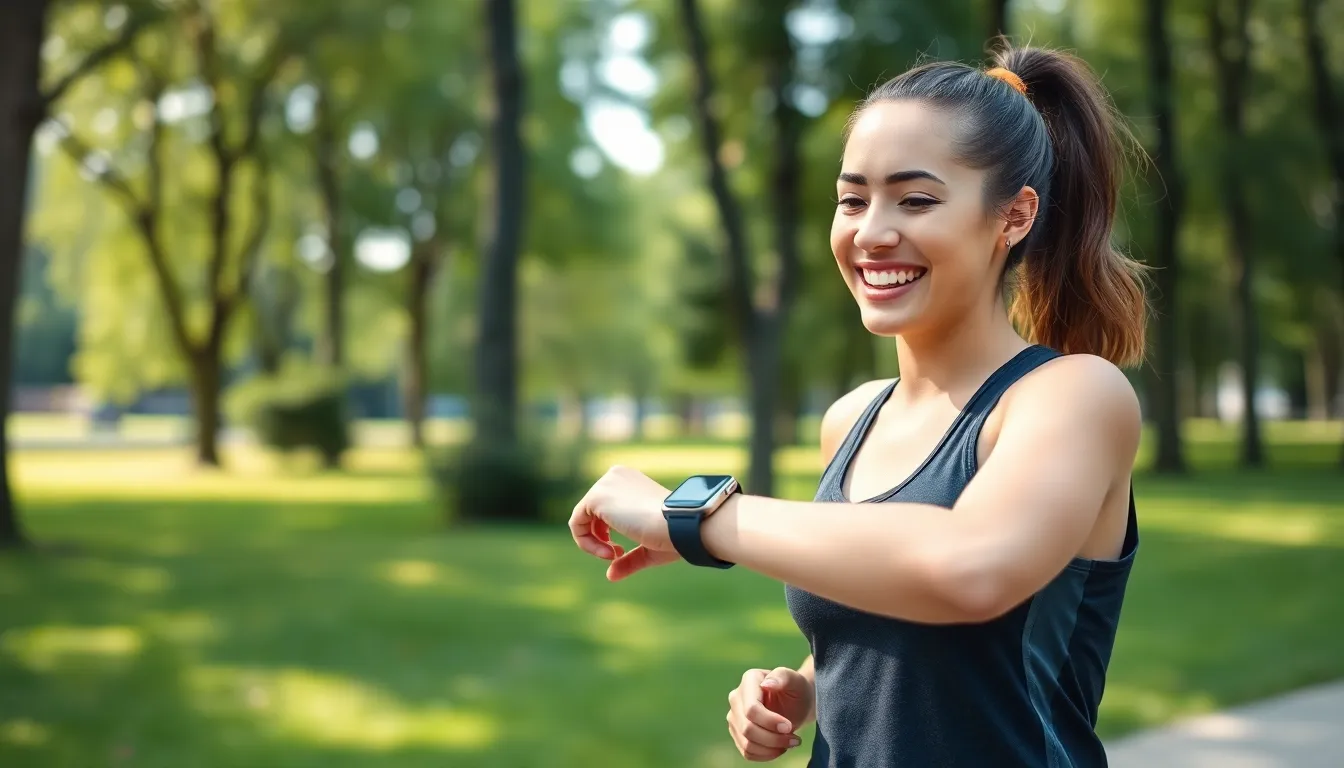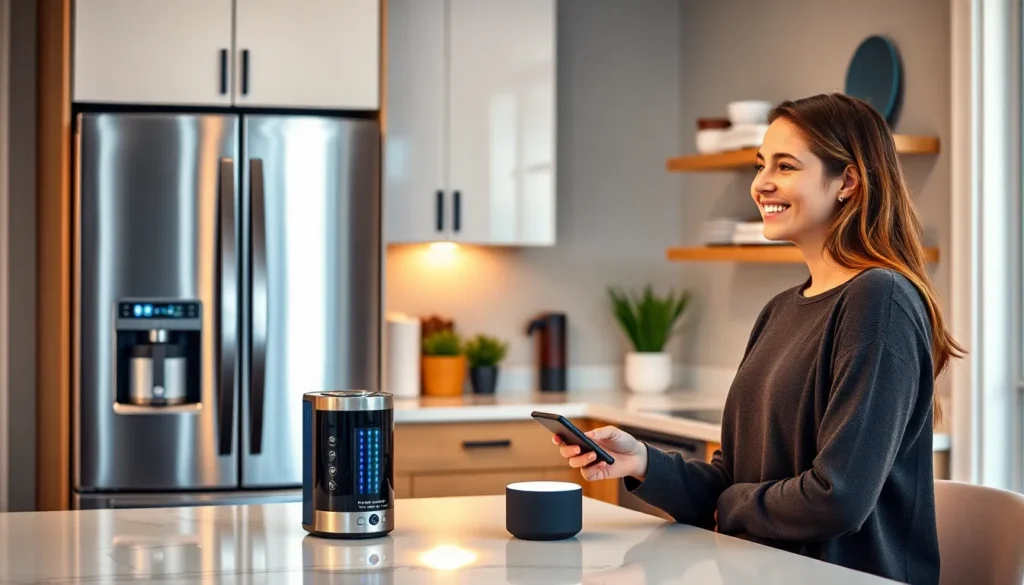Table of Contents
ToggleIn a world where fitness goals often clash with Netflix marathons, fitness gadgets are here to save the day—or at least your workout. Gone are the days of counting reps in your head or guessing how many calories you burned while valiantly dodging that last slice of pizza. With a plethora of devices designed to track, motivate, and even entertain, getting fit has never been more fun—or less painful.
Imagine strapping on a sleek smartwatch that not only tells you the time but also reminds you to stand up and shake off that couch potato vibe. From smart scales that might just judge your late-night snack choices to heart rate monitors that make you feel like a superhero, these gadgets are the perfect sidekicks in your fitness journey. So gear up and get ready to embrace the future of fitness—because who said getting fit can’t be a little bit of fun?
Overview Of Fitness Gadgets
Fitness gadgets play a crucial role in users’ fitness journeys. These devices encompass various products, each designed to enhance physical activity and streamline fitness tracking. Common categories include wearable technology, smart home gym equipment, and fitness apps.
Wearable Technology
Wearable devices such as smartwatches and fitness trackers monitor daily activity levels, heart rates, and sleep patterns. They provide users with real-time feedback and enable detailed data analysis. Examples include:
- Smartwatches: Devices like the Apple Watch and Fitbit Blaze offer built-in GPS, workout tracking, and notifications, allowing users to track workouts seamlessly.
- Fitness Trackers: Gadgets like the Fitbit Charge and Garmin Vivosmart focus specifically on step counting and heart rate monitoring, catering to users seeking simplicity.
Smart Home Gym Equipment
Smart home gym equipment transforms traditional workouts into interactive experiences. Popular items include:
- Connected Dumbbells: Products like the Bowflex SelectTech allow users to adjust weight digitally and track progress via associated apps.
- Interactive Fitness Mirrors: Devices like the Mirror and Tonal offer guided workouts and real-time feedback, making home fitness effective and engaging.
Fitness Apps
Fitness apps provide additional support to individuals using fitness gadgets. These apps track performance metrics, generate workout plans, and foster community engagement. Notable examples include:
- MyFitnessPal: An app that tracks nutrition and exercise, allowing users to log food intake and monitor weight loss effectively.
- Strava: Designed for runners and cyclists, Strava enables users to share activity data and compete with others, driving motivation through community.
These gadgets and tools integrate seamlessly, creating a comprehensive system for users to monitor their fitness. Embracing fitness gadgets helps individuals achieve their goals while enjoying their workouts.
Benefits Of Using Fitness Gadgets

Fitness gadgets offer numerous advantages that enhance the overall fitness experience and support the achievement of personal fitness goals. They provide insights that help individuals optimize their workouts and maintain motivation.
Enhancing Workout Efficiency
Enhancing workout efficiency occurs through the use of fitness gadgets. Smartwatches and fitness trackers monitor real-time data, such as heart rate and calories burned, allowing users to adjust their routines instantly. Connected home gym equipment offers interactive workouts, guiding users through exercises while providing instant feedback. Applications like workout planners help users develop structured training regimens tailored to their fitness levels. With these tools, individuals can maximize workout results and minimize time spent on ineffective activities.
Tracking Progress
Tracking progress becomes seamless with fitness gadgets. Wearable devices collect data on daily activities, sleep patterns, and workout performance, enabling users to analyze trends over time. This data visualizes goals achieved and highlights areas for improvement. Many fitness apps integrate social features, allowing users to share their milestones, fostering motivation through community support. Regularly monitoring progress helps users stay accountable, reinforcing commitment to their fitness paths while celebrating their achievements.
Popular Types Of Fitness Gadgets
Fitness gadgets encompass a variety of devices designed to enhance workout efficiency and promote an active lifestyle. Notable categories include wearable devices, smart equipment, and fitness apps.
Wearable Devices
Wearable devices, such as smartwatches and fitness trackers, monitor daily activities, heart rates, and sleep patterns. These gadgets provide real-time feedback, enabling users to track progress and set achievable goals. Popular examples include the Fitbit Charge and Apple Watch. Wearable devices often sync with mobile applications, allowing users to analyze their performance data and receive personalized recommendations tailored to their fitness needs.
Smart Equipment
Smart equipment revolutionizes traditional workouts by introducing interactive features. Connected gym machines, like Peloton bikes and interactive fitness mirrors, offer guided workouts that engage users visually and audibly. These devices often include built-in metrics and instant feedback, enhancing the overall exercise experience. Brands like Tonal and Mirror combine technology with fitness, creating immersive environments that motivate users to push their limits.
Fitness Apps
Fitness apps support users by tracking performance metrics, creating custom workout plans, and enabling social interaction. Applications like MyFitnessPal and Strava track calories burned and distance covered, while others provide access to vast exercise libraries. Many apps also foster community engagement through challenges and leaderboards, promoting motivation among users. These digital tools streamline fitness journeys, making it easier to monitor progress and stay connected with like-minded individuals.
Tips For Choosing The Right Fitness Gadget
Selecting the right fitness gadget enhances the effectiveness of personal workouts. Several factors must guide this decision-making process.
Compatibility with Goals
Focus on how the gadget aligns with specific fitness goals. Individuals aiming for weight loss might consider smart scales that track body composition, while those pursuing athletic performance may opt for advanced fitness trackers that monitor heart rate and performance metrics. Assess the features of wearable devices to ensure they provide necessary data, such as step tracking, calorie counting, and sleep analysis. Evaluate whether selected gadgets integrate with fitness apps, fostering personalized experiences and actionable insights based on real-time data.
Budget Considerations
Determine a budget that accommodates both immediate and future fitness needs. Fitness gadgets vary widely in price, ranging from affordable fitness trackers, approximately $50, to premium smartwatches exceeding $500. Prioritize essential features over brand names, ensuring the chosen gadget meets specific requirements without unnecessary costs. Evaluate warranty options and subscription fees associated with connected devices, as ongoing expenses can impact overall budget allocation. Striking a balance between quality and price delivers satisfactory long-term fitness solutions.
Fitness gadgets have transformed the way individuals approach their health and wellness journeys. By integrating technology into workouts individuals can enjoy a more engaging and efficient experience. These devices not only track progress but also inspire users to stay committed to their goals.
As the fitness landscape continues to evolve choosing the right gadget becomes essential. Prioritizing compatibility with personal objectives and budget ensures users find tools that truly enhance their routines. With the right fitness gadgets in hand achieving fitness goals while enjoying leisure activities is more attainable than ever.









